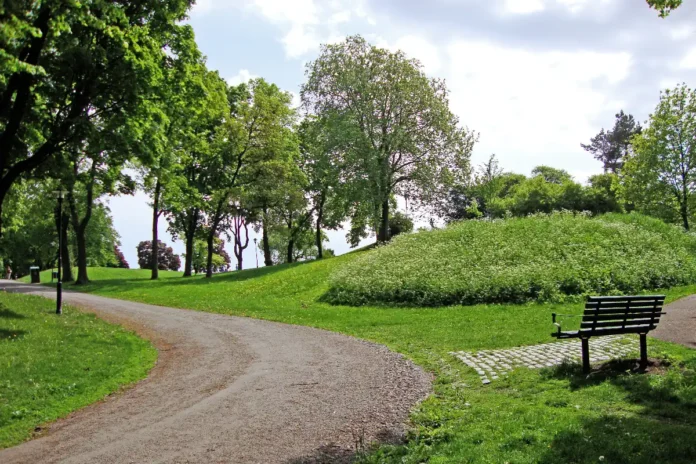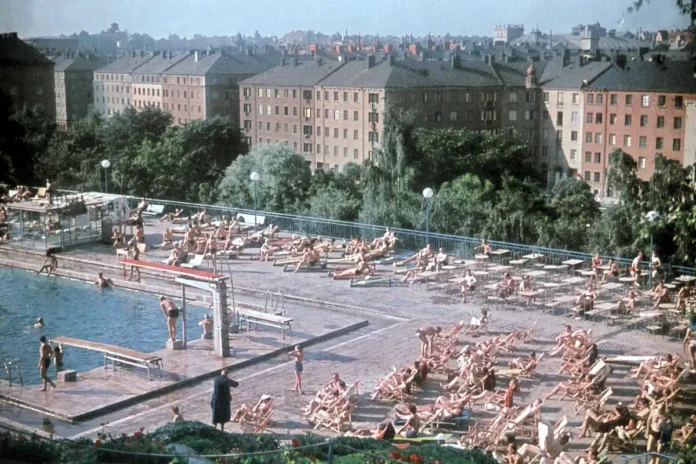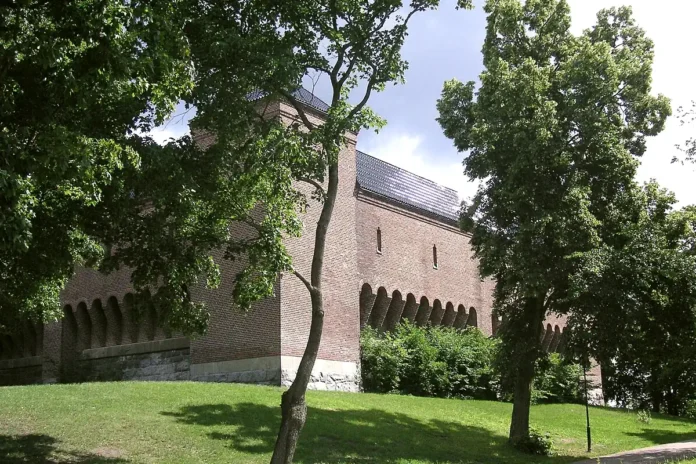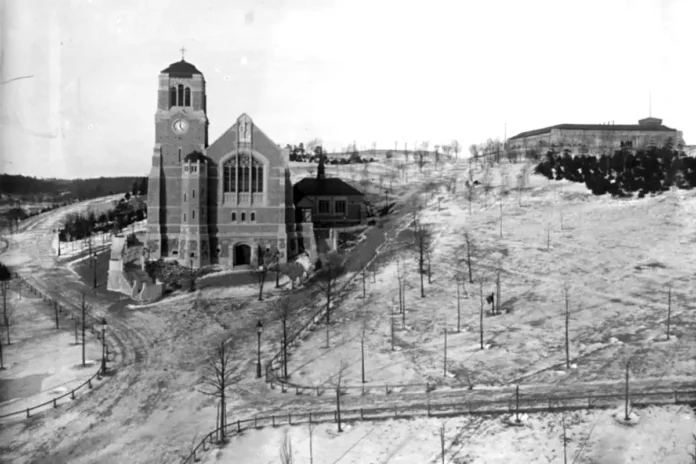With its hilly landscape and expansive city views, Vanadislunden Park in the heart of Stockholm provides a tranquil haven. Named after the Norse goddess Vanadis (Freyja), this 9-hectare green space features a castle-like water reservoir (1918), St. Stephen’s Church (1904), and interesting sculptures.
Visitors enjoy scenic trails, picnic spots, and the seasonal Vanadisbadet outdoor pool. Blending history, art, and nature, it’s a tranquil oasis near the city’s bustling core.
The park features two well-kept municipal playgrounds, offering kids a fun and safe space to play and explore.
Historical significance
Vanadislunden’s origins trace back to the mid-1880s, when Stockholm underwent rapid urbanization. The park occupies land once known as Ormträskhöjden (“Snake Lake Heights”), a remote, impoverished area mockingly dubbed “Sibirien” by locals. Its transformation began with a bold vision: to convert this neglected terrain into a green oasis.
The park’s creation involved significant engineering. In 1893, approximately 2,000 trees and shrubs were planted, while 8,000 horse-drawn loads of soil—largely sourced from nearby tobacco fields—were hauled in to reshape the landscape. Waste materials were initially used as fill before fertile soil was added, a practice reflecting 19th-century urban development methods. Though most of the park was completed by 1903, its plantings required decades to mature into the lush canopy seen today.
This project aligned with Albert Lindhagen’s broader urban planning philosophy, which prioritized preserving natural terrain over leveling it for construction. By integrating green spaces into Stockholm’s expansion, Lindhagen’s approach not only introduced light and greenery to the industrializing city but also proved economically pragmatic. The park’s hilly design, part of Stockholm’s “bergspark” (hill park) tradition, further exemplified this strategy, blending nature with urban utility.
Characteristics of Vanadislunden
- Natural Terrain: Brunkebergsåsen, a cobblestone ridge from the last ice age, runs through the park’s famously hilly terrain. The highest point in Vanadislunden, standing 43 meters above sea level, offers breathtaking views of the surroundings.
- Water Reservoir: Constructed between 1913 and 1918, Vanadislundens vattenreservoar is a notable water reservoir and one of the park’s most notable features. This castle-like structure, designed by Gustaf Améen, can hold 8,100 m³ of water. It is situated on pillars within an older reservoir that was built in 1879.
- The park’s northwest section is home to Cedersdals malmgård (Cedersdal’s Manor), an 18th-century manor house with the only preserved tobacco barn in the heart of Stockholm.
- Finished in 1904, Stefanskyrkan (St. Stephen’s Church) is a stunning church located at the intersection of Tulegatan and Frejgatan. In addition, the church has a Carl Eldh stone crucifix and a light sandstone facade. In 1899, they moved the original wooden chapel to Aspudden in southern Stockholm and renamed it St. Sigfrid’s Church.
- In 1955, the park welcomed Anders Jönsson‘s Flicka i Aftonsol (“Girl in the Evening Sun“) sculpture. The sculpture is located in the northwest of Vanadislunden, atop a hill.
Vanadisbadet’s outdoor swimming
Vanadislunden is home to the public swimming pool known as Vanadisbadet, which offers outdoor swimming amenities. In essence, this is the greatest place to cool off during the hot summer months.
Conclusion
Vanadislunden offers something for everyone, whether you want to enjoy outdoor activities, have a family picnic, explore historical sites, or take a leisurely stroll.
So, seize the opportunity to visit one of Stockholm’s most exquisite and captivating parks, where peace and urban charm coexist. The park is the perfect escape from the bustle of the city, and its natural beauty will captivate you.













